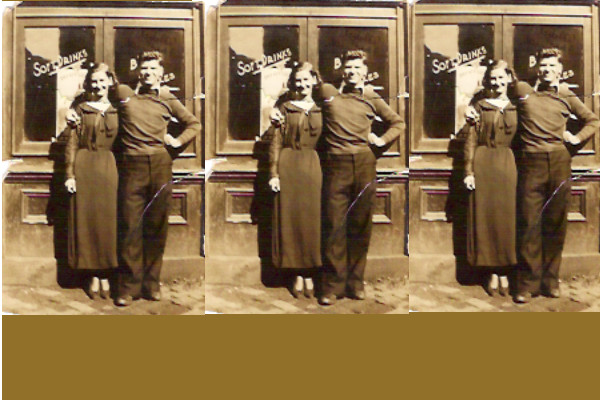By Gerry Griffith
Weelunk Contributor
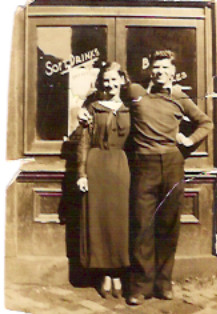
Nineteen-year-old George Griffith’s shovel dug into the hard Colorado soil and created a stone-on-metal scraping noise. So did the shovels belonging to the 20 other men around him on a cold fall Saturday afternoon in 1935. They moved tons of dirt with hand tools and wheelbarrows and worked to near exhaustion before a rifle shot announced the end of the day. They were members of the Civilian Conservation Corps – the CCC and they were creating trails and overlooks in a wilderness area near Colorado Springs. It was hard, straining work, but it was work nonetheless.
George and many of the other men in his camp were from Wheeling, but now called a rugged collection of wood frame buildings and canvas tents in the middle of nowhere home. The Roosevelt Administration cooked up the CCC idea as a way of putting young men to work in the height of the Great Depression and George, a veteran of numerous Wheeling manufacturing jobs that dried up along with the economy, had little choice but to enroll in the program, board a crowded, noisy train, and go where the CCC sent him.
The Wheeling he left behind was reeling from economic hard times like most American communities. Jobs disappeared, stores and businesses that had thrived for decades closed, and families moved away looking for work. He also left his girlfriend, Mabel, the 16-year-old daughter of Tom and Lizzie Minns, the sightless proprietors of South Wheeling confectionary stores.
In the CCC camp, the men spent their evenings smoking cigarettes, playing cards, re-reading letters from home, and engaging in various tests of strength; there was a cocky kid a few tents down from George named Robert Mitchum, who was impossible to beat in arm wrestling.
They were homesick, bored and weary, but the downtime gave George plenty of time to think and plenty of time to make plans for the future. He was often bothered by shooting pains in his left arm as he tried to relax by an evening campfire. He got his mind off his discomfort by thinking about when he first noticed Mabel in Tom’s little confectionary on Eoff Street.
When Mabel caught his attention, George was one of the Minns Confectionary loafers. He was thin, of average height with wavy light brown hair. He spent most of his evenings at Tom’s arguing about sports and politics with his buddies and trying to strike up conversations with girls. Mabel was chronically thin, had shoulder-length dark brown hair, and always seemed busy straightening up merchandise in the store near where George was sitting. George took that as an encouraging sign and eventually worked up the nerve to speak to her.
Tom and Lizzie weren’t very pleased when a neighbor told them that George’s attentions seemed to have turned toward Mabel. George seemed nice enough, but his big mistake was inviting 15-year-old Mabel to an un-chaperoned wiener roast in a neighbor’s backyard. Tom, but mostly Lizzie, shut down the suggested date without hesitation. George was not dissuaded from his courtship. I’m grateful for that.
George was 18 years old in 1934. He lost his mother when he was a small boy and dropped out of school after eighth grade so he could go to work. He lived with his father, who was chronically unemployed, a little sister, and two older brothers, who were in the same boat. They pooled their meager wages to keep a minimal home and food on the table. He didn’t really have a home life, but he had Tom Minns’ confectionary.
He was working on 48th street at the Continental Can factory that, until 1933, had been known as the Wheeling Can Company. The outfit had a history dating back to 1901.
For years, the company produced tin pails that were used to sell lard at grocery stores all over the country. During Prohibition, the company churned out another interesting product—five gallon square cans that were put to use with great discretion. Those cans were painted camouflage brown because unpainted cans might reflect sunlight and draw revenuers’ attention to illegal stills in the hills. By 1933, however, the company was responding to market growth for engine oil storage cans, automobile and gas station-related products, and canning lids.
When the whistle blew at the end of his shift, George always headed for Tom’s confectionary where he talked over current events, listened to Chris Cerrone bang out dance music on a worn old piano, smoked cigarettes, and drank bottles and bottles and bottles of pop. Eventually, his good humor, manners, and kindness wore Tom and Lizzie down, and they began to trust the young man to take Mabel out for the number one activity afforded young people in Wheeling at the time—long, long, long walks, mostly north toward downtown or east up 29th Street until the hill got too steep.
George sealed the deal with the Minns family when he started participating in late evening reading sessions in the back room of Tom’s store. The Minns family had an endless appetite for books. For years, Mabel read out loud to her parents and, when George came along, he became an active participant in their evening reading sessions, performing a warm comfortable baritone narration with a smooth reading style. By the time they ran through The Light that Failed by Rudyard Kipling and Up from Slavery by Booker T. Washington, George was a member of the family. George began to call Lizzie “Abbie” after the main character in a tearjerker called A Lantern in Her Hand—the story of a strong prairie woman. He began to call Tom, “Pap.” He was thoughtful, kind, patient, and helpful to the little family. The die was cast.
The economy eventually touched the can company, and George was laid off later in 1934. That’s when he enlisted in the CCC and found himself creating trails and overlooks in Colorado’s Garden of the Gods Park that are still heavily used today. He earned $30 a month for his pick and shovel work and sent $25 of that home. He also developed a love of being outdoors that would come into play a dozen years later.
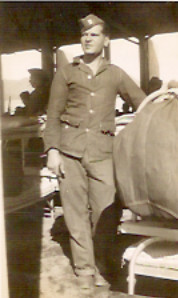
By the end of 1935, George’s CCC enlistment was finally over. He could have re-enlisted, but he wanted to return to Wheeling, Mabel, and his unique new adopted family. On a rainy Monday morning, George packed his shaving gear in a paper sack, gave his CCC uniforms away to a few chums, and took a bus into Colorado Springs where he caught a train east for Wheeling.
The year in the wilderness had been tough on Mabel as well as George. Their joy in being reunited was the talk of the store when George got home. He soon was fortunate to get a new job at the Steinmetz Box Factory at 25th and Wood Streets, where he helped churn out boxes for Wheeling’s stogie makers.
He got comfortable enough to test-drive an old used Essex with Tom along for the ride. The criterion was straightforward: If the car made it up Wheeling Hill without requiring a significant downshift, it was acceptable. It did, and he applied for a loan.
Then, Mabel had the brainstorm that George should take the whole family to Buckhannon to visit her grandparents in the new car that very weekend. The trouble was the bank hadn’t approved the loan for the car yet. Lizzie, as she would do for her family for the next three decades, got involved. She made a personal visit to the car dealer with George. She vouched for him and asked if he could release the car to the family for the weekend even without the loan approval. The dealer (I never learned who he was.) agreed. In what must have looked like a Lucy, Desi, Ethel and Fred adventure, the family loaded up and headed for Buckhannon. Never mind George really didn’t have a driver’s license yet nor did he really know the way to Buckhannon. It took them almost
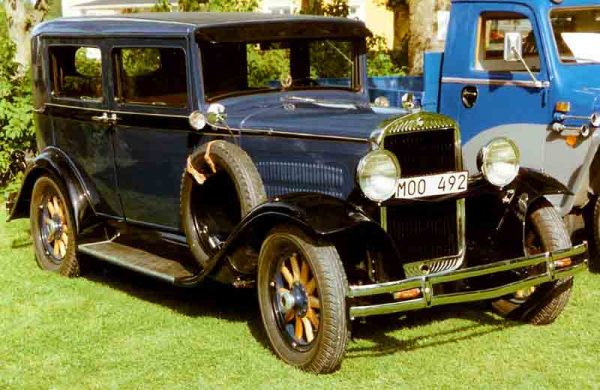
nine hours to find their way to Upshur County—a drive easily made today in about three hours. When George reported back to work on Monday morning, he found a layoff notice waiting for him. He sheepishly returned the Essex and withdrew his loan application.
It wasn’t long afterward that George’s father was walking slowly along the sidewalk on Market Street in front of the Ohio County Public Library. He stopped, clutched his chest and was dead before he hit the sidewalk. There was a little bit of insurance money in George’s pocket a few weeks later, and he decided to invest in a more dependable vocation; he enrolled in the Wheeling Barber College.
Before long, George was working as a junior barber in a series of Wheeling shops from Wheeling Island to North Wheeling and South Wheeling. He spent four years saving, scrimping, and getting ready for the next stage in his life. By 1940, he was ready. He approached Lizzie first.
“Abbie,” he said, “do you think $20 a week would be enough for Mabel and me to make it on?”
Lizzie was torn. She depended upon Mabel for so much, and a bond existed between them that was stronger than most mother-daughter situations, and she was afraid of losing her. But she smiled, knowing that George was the one who could make Mabel happy.
“If you watch your step at every turn, you can make it George.”
It soon became apparent that George would not be taking Mabel away from Tom and Lizzie. He would instead become absorbed by the high-energy Minns clan and become a part of a traditional family for the first time in his life as soon as he managed to save a few more dollars so living arrangements could become more comfortable for all. But it was official: George and Mabel were engaged.
Unfortunately, the Japanese, the Germans and the local draft board had other plans.
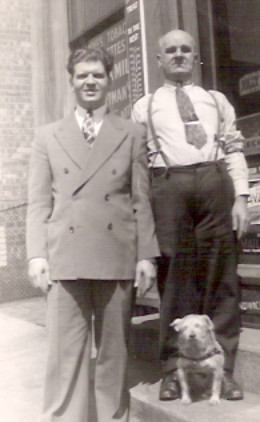
and George posed with Tom and Pal on the front step of
one of the confectionaries to mark the occasion.
There’s an interesting 1930s newsreel about the CCC’s work, particularly in West Virginia, here.
Read more Mabel Files:
Part 1: Introduction
Part 2: Lindy Visits Wheeling
Part 3: T.J. Minns and his “Pal”
Part 4: Music, talk, and danger inside the Minns’ Confectionary
Part 5: Stogies, Sandwiches, and Crocheted Lace
Part 6: The Minns Confectionary Feels the Loss of a Jazz Giant
Part 7: Wheeling’s Underworld and Big Bill


